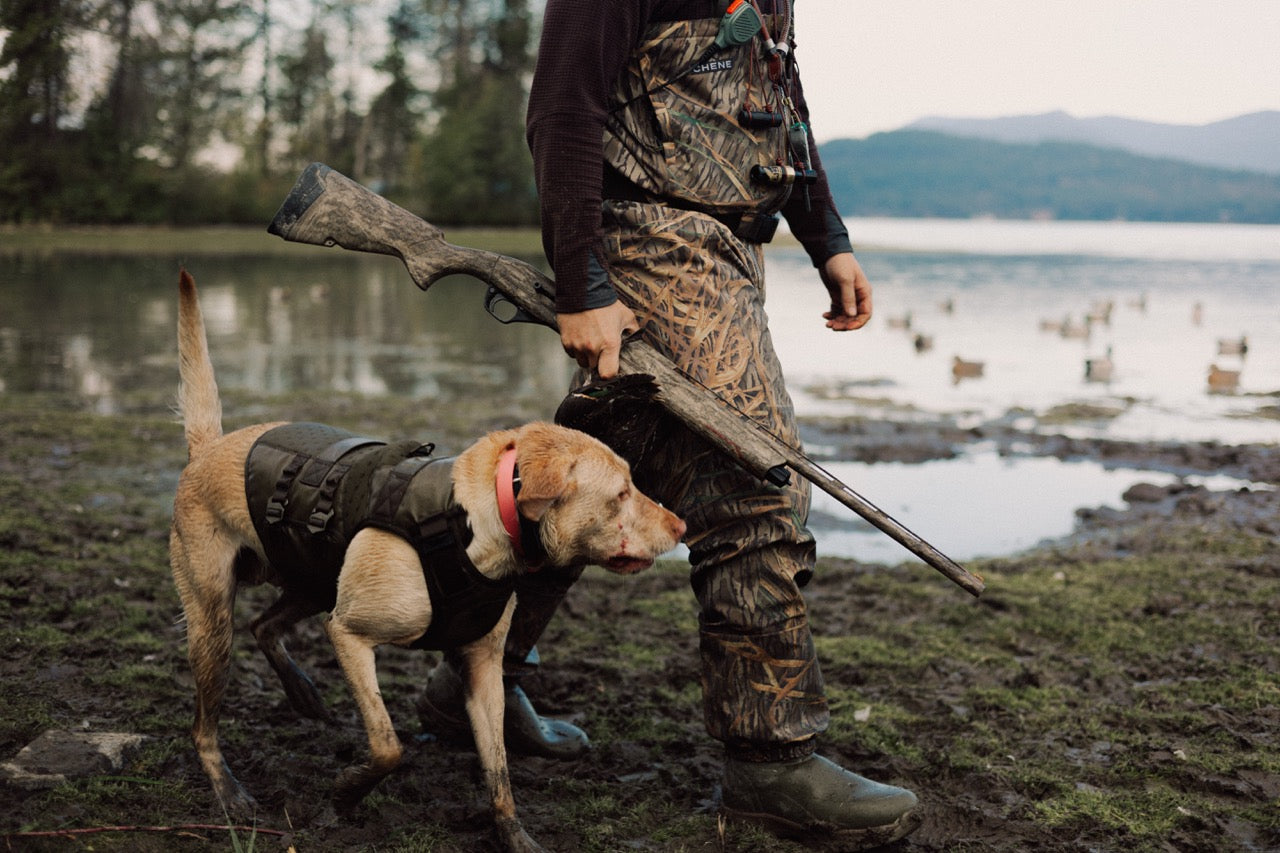Q&A with Kali Rush | Regional Biologist, Ducks Unlimited
GUNNER is a Proud partner of Ducks Unlimited and supports conservation by giving back a portion of every item purchased in the Ducks Unlimited x GUNNER collection. As the world leader in wetlands and waterfowl conservation, DU’s efforts work to protect our environment and ensure the longevity of our natural resources for generations to come.
GUNNER recently talked with Kali Rush, a Regional Biologist based in Michigan at Ducks Unlimited, about what it looks like for her to actively restore wetlands and grasslands.
What does a typical day as a biologist look like for you?
The best part about my job is that every day looks different. Sometimes I’m in the office, sometimes I’m at home, and sometimes I’m out in the field.
As a Regional Biologist, I cover the entire state of Michigan and work with all kinds of partners – federal and state government, land trusts, private landowners, and conservation districts. My core responsibilities are to manage our Michigan Conservation Program, including securing grant funding and administering those grants with our partners and DU teams (Engineering, Land Protection).
However, I also help out with our fundraising efforts by hosting a Family Fun Night annually, assisting our policy team by advocating for wetlands conservation to our legislators in Lansing and DC, assisting our communications team in press releases, project and conservation articles, and sharing photos and videos of our projects, and assisting our science team with research, conservation planning, and disseminating important information about our work.
Is there a specific area you specialize in? Can you share with us how you became interested in this field of study?
I specialize in waterfowl and wetland conservation. I didn’t know much about the field of conservation before I started my academic studies. I loved math & science, and I wanted to work outside in some way that made a real difference. So I combined my love for the outdoors, strong academic background, and ability to work with people into a dream career!
It’s a winding road (for all biologists!), with several ways to achieve the same end goal. I started at Michigan State University majoring in Fisheries and Wildlife, with a concentration in Wildlife Biology & Management. It’s incredibly important to pair academics with hands-on experience. I held several temporary field jobs throughout my time at MSU. I wasn’t sure what I wanted to specialize in, so I tried a little bit of everything – private, governmental, and academia; wetlands, uplands, mammals, birds, and plants.

What impact do the projects you work on have? How can we see those tangible changes?
At DU, we protect, restore, and enhance wetlands and associated uplands. In my region of Michigan, we typically conserve 1,000 acres each year! The best part about my job is that we can see tangible changes almost immediately. Depending on the type of project, we can see many changes in the vegetation, water levels, wildlife use, and more! My favorite projects to visit are wetland restorations. Oftentimes, we are restoring a drained wetland in cultivated agriculture. It’s pretty awesome to see a former corn or soybean field filled with water, wetland vegetation, and grasslands, and then watching the ducks drop in!
What is one of your favorite projects you’ve worked on?
In my first three years at DU, there is one project that stands out for me. Our Bayshore Birds project in Tuscola County, Michigan, is a unique conservation story. In 2001, the original landowners restored a wetland and two grasslands on 258 acres. Eventually, it became too much to manage, but they wanted to protect their investment and protect the area forever. They donated the property to DU in 2019, and DU donated the property to the Michigan DNR. This area of Michigan is highly susceptible to the invasive Phragmites australis, a grass that creates dense monocultures with little to no benefit for wildlife. I secured two grants to a) perform habitat management to reduce the presence of Phragmites and enhance the grasslands for nesting birds and pollinators, and b) to develop engineered designs to revamp the wetland management infrastructure. DU and its partners will finish this project in the next few years by rebuilding the dike system and installing a new bi-directional pump.

What motivates you to continue your research and conservation efforts?
The biggest motivation for me is knowing the impact of my hard work. There are a lot of highly-visible benefits to my work – aesthetically pleasing landscapes, wildlife use, and endless recreational opportunities. But there are so many additional benefits, even for folks that never set foot on-site, such as improved water and air quality, flood storage and mitigation, and carbon storage.
To learn more about Ducks Unlimited or find your local DU chapter, visit www.ducks.org. Be sure to check out the Ducks Unlimited x GUNNER collection.



























